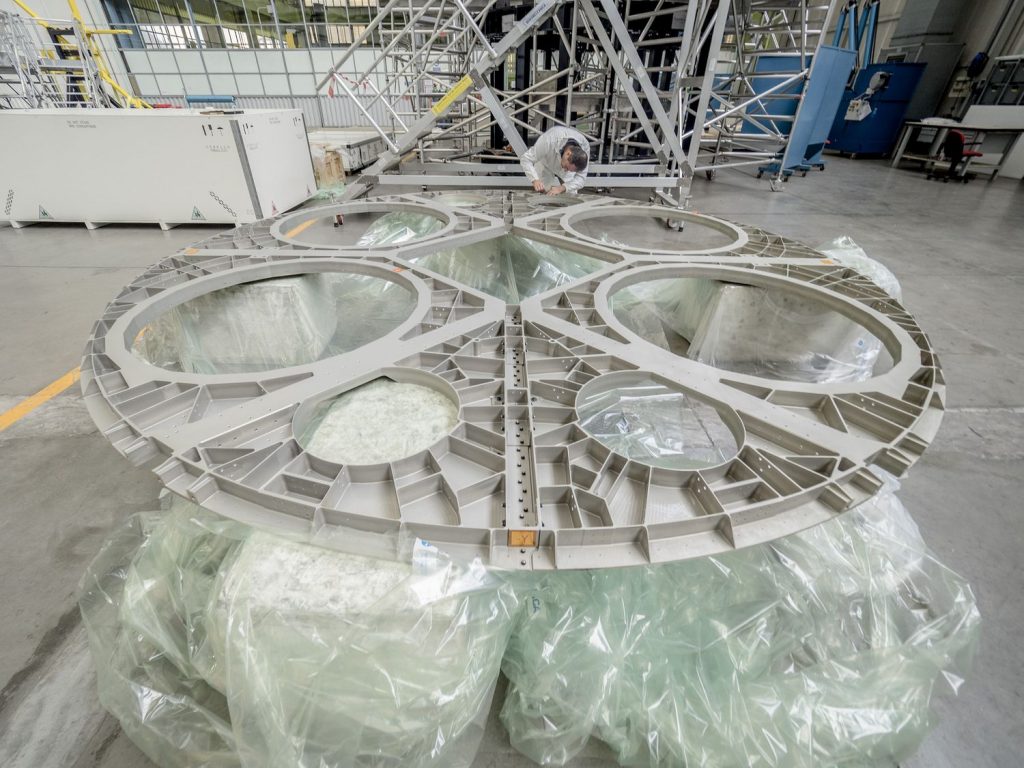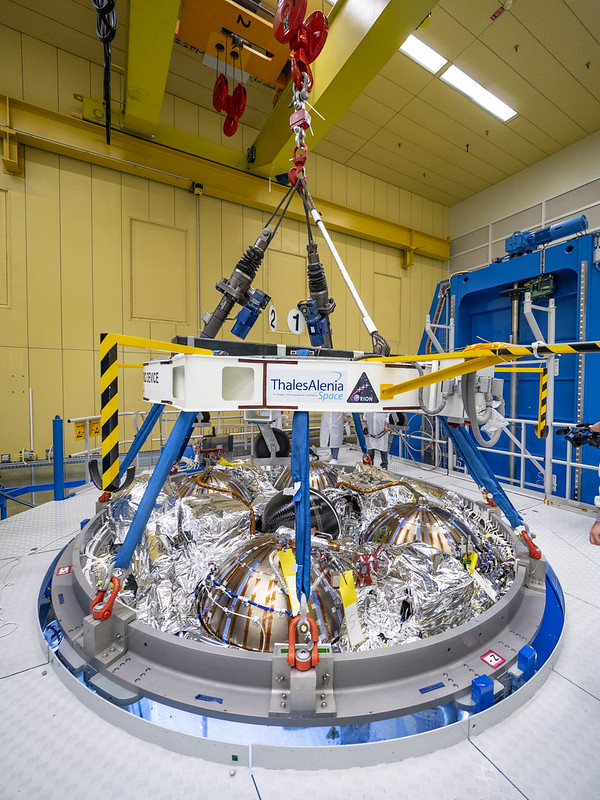Per inhabitant Belgium consistently scores high on investment in space so for a small country, the Belgian contribution to the European Service Modules is high.
Celestia Antwerp is the new name for the ground segment part of Antwerpspace, a company based in in the Hoboken district of the city Antwerpen. They are supplying some of the Electrical Ground Support Equipment (also known as EGSE) for the development and testing of the European Service Modules.
Celestia Antwerp supplied electrical ground facilities for assembly, integration and verification at all sites where the European Service Module avionics components are tested: the Airbus integration hall in Bremen, Germany, Airbus in Les Mureaux, France, and at Lockhead Martin’s Integration Test Laboratory in Denver in Colorado, USA, as well as supplying controllers to test the Power Control Distribution Units built by Leonardo in Milan, Italy, the Thermal Control Units built by Airbus Crisa in Spain, and the Solar Array Drive Electronics built by Beyond Gravity in Switzerland.
Thales Alenia Space Belgium are building and delivering Pressure Regulator Units (PRU) for the European Service Modules. These small units are vital for the propulsion system and placed all along the complex array of fuel lines that use helium to push propellant to the engines. The regulator units ensure that the fuel reaches the engines at the right time in the right amount and provides a check to the spacecraft operators that everything is happening as it should.
Lastly for this blog entry we introduce Sonaca who are building the tank bulkheads for the European Service Modules. Made of aluminium these 4.5 m cross sections hold and support the fuel tanks, the heaviest part of the Orion spacecraft when full. Built as half-Moons and then combined to its circular shape they have round holes for the four fuel tanks and four smaller holes for the oxygen and nitrogen tanks to stick through. Lastly the helium pressurant tank that pushes the fuel to the engines has a space to pop through the tank bulkhead in the middle. As these tanks are full of liquids at launch, they are the heaviest components and so the tank bulkhead is built to withstand the forces of launch and the liquids sloshing inside.




 Automated Transfer Vehicle page
Automated Transfer Vehicle page ATV blog archive
ATV blog archive
 NASA Orion page
NASA Orion page NASA Artemis
NASA Artemis Airbus Orion page
Airbus Orion page
Discussion: no comments